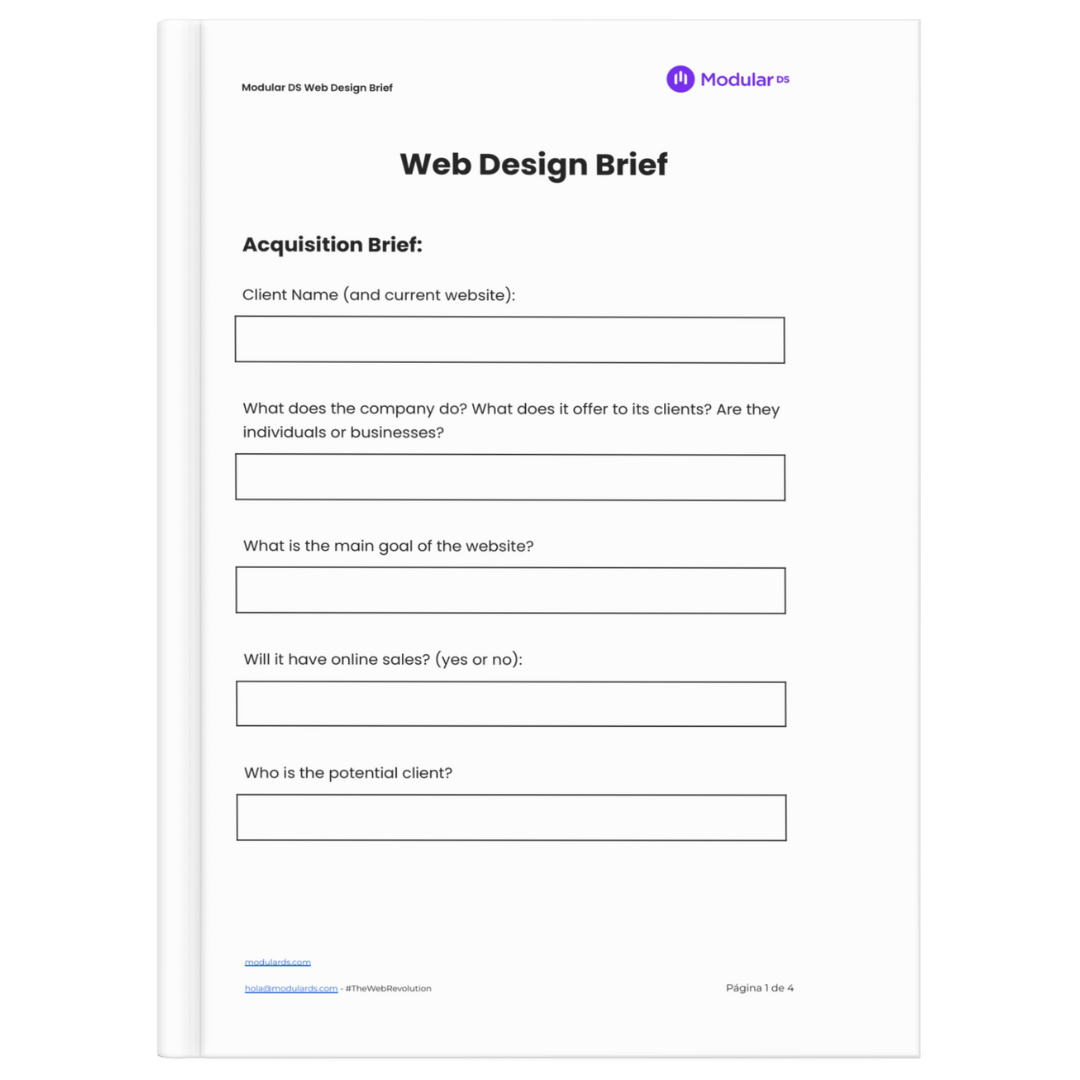
If you decide to send the brief for your client to complete on their own, it is important to ask them to include as much detail as possible. This will simplify the process and prevent potential misunderstandings.
If you prefer to complete the brief along with your client, whether in person or via video call, you will have the opportunity to delve into important topics and clarify any doubts. Moreover, you can leverage your experience to guide the client and contribute innovative ideas to enhance their online presence.
Once the brief is ready, you can begin your work, making sure to address each point to ensure nothing is overlooked.
Project goals: What does your client aim to achieve with the web project? Do they want visitors to contact the business, improve their online image, retain customers, or sell products directly from the site? Clearly defining these objectives guides all subsequent decisions. It’s ideal to have one well-defined main objective, although several secondary objectives can be considered.
Target audience: Knowing the target audience is fundamental. It could be another business (B2B) or individual consumers (B2C). Within B2C, distinguish between different demographic groups such as gender, age, interests (sustainability, sports, fashion, etc.). Creating customer profiles can be very useful for better understanding the users and effectively targeting calls to action (CTA) and featured sections of the website.
Content and structure of the website: Define what information and content should appear on the website and how to structure it. This includes creating a navigation tree outline. The more information and details the client provides, the better you can align the project with their expectations, thus avoiding later corrections and changes that consume time. If the client has documents like brochures or a previous website, these can serve as an initial guide.
Restrictions and limitations: Identify any restrictions that must be respected, whether they are legal, industry regulations, or moral considerations. This may include words, expressions, or images that should be avoided to not compromise credibility or violate regulations. The client should clearly establish these restrictions from the start.
Style guide and audiovisual material: Check if the company already has an established corporate image, including logos, typography, colors, and other visual elements. Also, make sure to know if they have their own photographic or video material or if they prefer to use stock images.
Stakeholders’ description: Identify all the people directly involved in the project. In small businesses, this may be limited to the owners or managers, while in larger projects it’s necessary to know everyone involved and have their contact information. This facilitates coordination and saves time by avoiding confusion about who is who.
Direct competitors: Analyzing the competition is essential. This allows you to study their strengths and weaknesses and gain a vision of the sector. This knowledge will help you improve your final proposal and find ways to differentiate your client from the rest.
Budget available: Knowing the available budget is crucial for adjusting the scope of the project to the client’s financial resources. Ask for as specific a figure as possible to avoid working on proposals that later turn out to be unfeasible.
Delivery deadlines: Clearly define the project delivery deadlines. Although clients often want immediate results, establishing a schedule with successive delivery dates for different versions of the project or specific actions is key. This scheduling will help you organize and meet the commitments made.